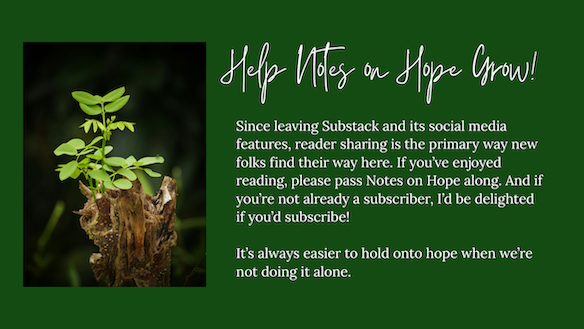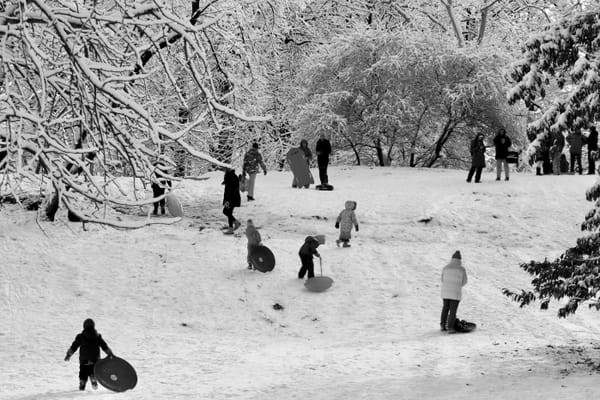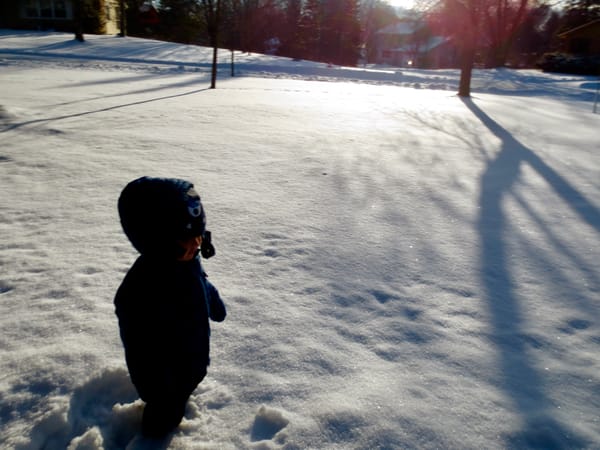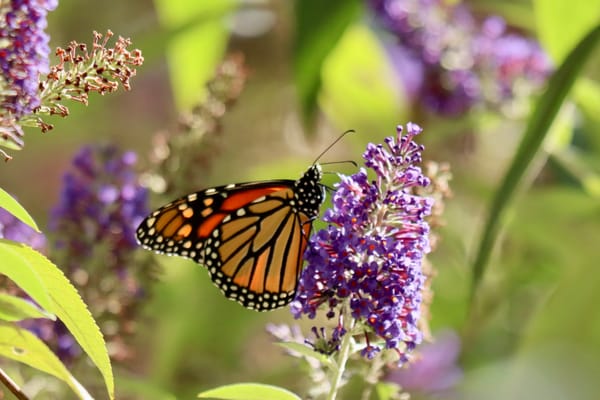I Dream of a Million Kites
We could prevent so much sorrow by getting better at sharing joy
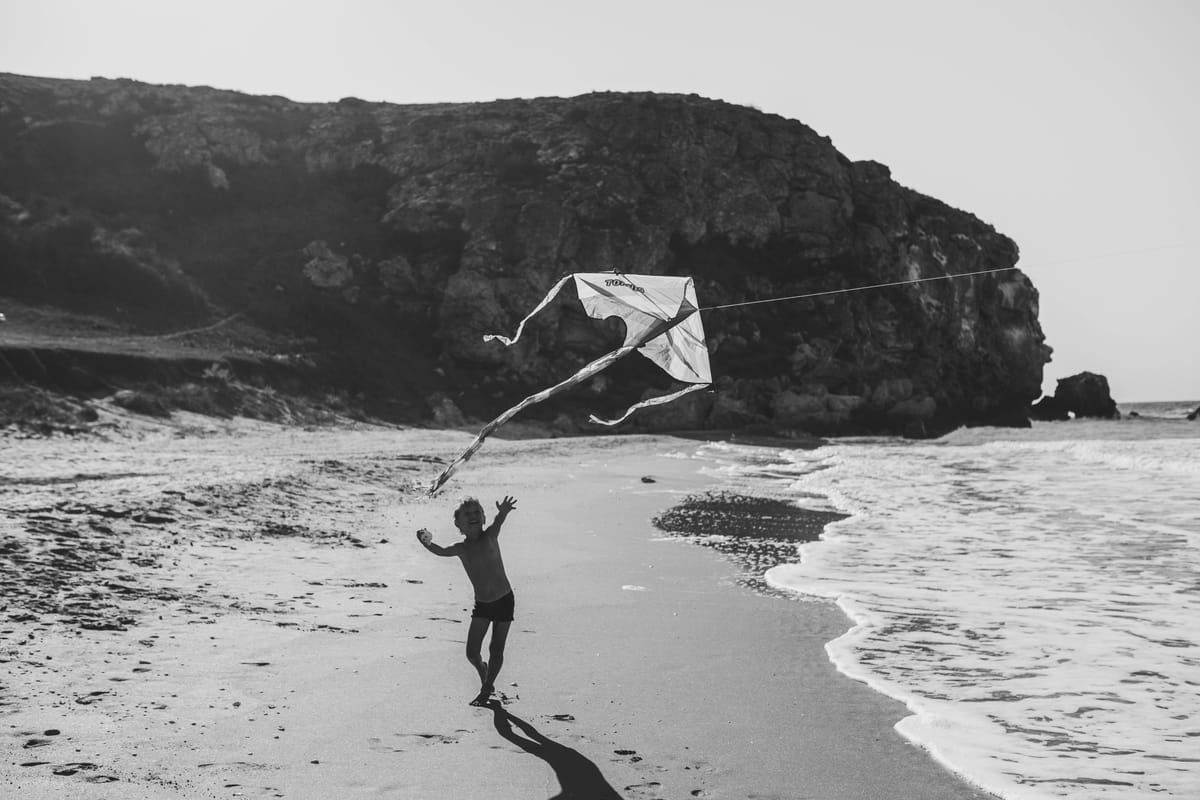
“Bear with me I
want to tell you
something about
happiness
it's hard to get at
but the thing is
I wasn't looking
I was looking
somewhere else
when my son found it”
~Paul Hostovsky
Years ago, when I was researching empathy and observing the ways young children care for each other in my own preschool classroom, I began with the assumption that I would find examples in moments of distress—one child tending to another after something had gone wrong or some hurt had been done. And there was, indeed, lots of data to be found amidst tears, as children do recognize and seek to resolve each other’s suffering very early. I think this is where most of us begin. When we think about empathy, we tend to think about suffering. But the children taught me an even more important lesson that year. They showed me that, while our capacity to feel empathy for each other’s pain does elicit a desire to help resolve that pain, our capacity for shared joy can be even more powerful and significant, because connection through joy leads us to actively prevent harm. While repair emerges out of sorrow, joy is protective and prophylactic.
The protective power of shared pleasure didn’t emerge instantly. In September, harm and repair were much more prevalent, as the children didn’t know each other and tended toward toppling block towers and careening into each other on the playground. Repair was in constant need, not because of malice, but because the children just didn’t seem to see one another readily or consistently. There was an exuberant tunnel vision to their play at the beginning of the year. But over time, as they gained more and more experience playing together, building together, singing together, and even chasing each other, they became increasingly protective of their shared delight. They began to tiptoe around each other’s wavering towers, veer out of each other’s paths as they raced around outside, and even pull each other back from falling. Tears diminished, because they were no longer just noticing pain, they were beginning to see each other through a lens of shared joy, and as a result they were preempting pain.
I’ve written about this classroom research and about the necessity of shared joy before—a concept that has strong roots in the work of Black writers like bell hooks and Ross Gay, and which children demonstrated for me with striking clarity in the classroom. But the potential power of empathy found in recognizing joy, rather than in waiting for sorrow, has been weighing on me over the past several weeks, as the news has, yet again, highlighted our capacity to care in the face of extreme suffering, while also serving as a grim reminder that we often fail to extend our empathy until we are faced with abject desperation.
Over the past two weeks, images of emaciated children in Gaza, ribs and vertebrae protruding, have gazed out from beneath global headlines. Their sunken, imploring eyes and the grief of the adults, who cradle sharp bones instead of caressing rolls of chubby baby flesh, seem to have prompted a tipping point in the world’s understanding of the extremity of their suffering.
Of course the path that led here is complex and centuries old, and of course the events that triggered this most recent conflict were horrific. I’ve spent the majority of my career teaching in and leading Jewish preschools. My great-great-grandfather left Eastern Europe during the pogroms of the early 19th century. I understand deeply and personally the long and complex harms and fears that have led to this moment. I’ve also spent my entire career advocating for the needs and rights of children—all children. I believe that recognizing the suffering of one child never negates the suffering of another, nor does the responsibility for children suffering anywhere ever rest on the shoulders of other children. As adults anywhere, we are responsible for children everywhere. The education scholar, Aparna Mishra Tarc, wrote of the war in Ukraine,
“Through social media, children’s experiences and voices are gaining a large and captivated global audience of what philosopher Hannah Arendt called ‘world spectators.’ As spectators, adults are implicated in children’s suffering in a way that demands recognition of and response to the deplorable conditions of their lives.”
The impact of the past weeks’ photos of starving children in Gaza on the collective conscience is neither new nor unique to this conflict. Such dire images are often the catalysts for historical turning points—the lifeless body of a Syrian toddler in velcro sneakers, lying on a beach in Turkey; a vulture watching over a starving child, head pressed to the dust, in Sudan; a Honduran child in a red t-shirt wailing as her mother, leaning over her, is searched by a US border agent; the photos of the open casket of Emmett Till; and of course the infamous image of terrified children, including a naked girl, running from napalm during the Vietnam War. These images of children's abject suffering, again and again, shift our discourse, our hearts, and our actions in important ways, but they always do so far too late. Even during the Holocaust, it wasn’t until images of concentration camp victims began to emerge, as the war ended, that the gruesome nature of the camps finally began to be understood and believed by the world.
In each of these examples, information about the horrors that led to the circumstances of the photos was readily available long before the images circulated and prompted our heartbreak and our compassion. These images are rarely the source of our knowing, but they are often the source of our eventual care. Our brains more easily connect to individuals than to statistics, and so images of children enduring excruciating suffering are uniquely powerful, ethically fraught, and often horrifically late.
Children are our coal mine canaries. Their small bodies are more rapidly impacted by physical deprivation, and their spirits are broken in lasting ways by the deprivation of care. As Tarc says, “All war is always war on children.”
I once heard a poet say that, “a crying baby is a tuning fork for the world.” The suffering of children ought to put us on notice and prompt our action long before it becomes abject and catastrophic, both because children, in their vulnerability, are our most basic and profound responsibility, and because their suffering is almost always a sign post of wider suffering.
I wish so deeply that we could do better at paying attention to children’s needs before they become dire. But, in moments like this, I am also always reminded that, while we need to push ourselves to notice and respond to suffering earlier, an even better path is to attend to joy and protect it fiercely. A laughing child is also a tuning fork, and, as the children in my preschool classroom showed me, if we recognized this and worked more intentionally and fervently to protect children’s laughter, we would surely prevent a great deal more suffering.

Researchers refer to the experience of connecting to someone else’s pleasure as “sympathetic joy.” Neurologically, sympathetic joy appears to activate some of the same brain regions that are activated when we empathize with someone else’s suffering, but there are also key differences. Suffering triggers a stronger response in the deepest parts of the brain, where we register our most visceral physical and emotional experiences. Sympathetic joy appears to be more complex, triggering a wider range of brain networks and involving more activity in the prefrontal cortex.
Evolutionarily, this makes sense. Our ability to quickly register and act upon the emotional contagion of someone else’s fear or pain is often critical to recognizing and responding swiftly when we ourselves might be in danger, too. Sympathetic joy also has survival benefits, but they are more nuanced. Joy facilitates relational trust and collaboration, both of which typically involve more time, repeated shared experience, and mutual dependence. Our instinctual response to suffering is so quick and visceral that it can defy distance and reason. Sympathetic joy, while often ignited just as quickly, is an experience that is more likely to shift our behavior, beyond the initial smile or laugh, over time and with those close to us, rather than immediately, instinctually, and distantly. This clearly presents more challenges if we are to set a goal of becoming better at protecting joy in order to prevent suffering on a wide and diverse scale. But I don’t believe that it’s impossible to share joy and guard against sorrow beyond the boundaries of our own communities and even at great distance and difference. Protecting joy requires more intentionality, practice, and patience. It means we have to actively look for joy, beyond our own personal spheres, and support its flourishing, instead of waiting for images of horror to trigger our retroactive compassion.
I’ve spent the last four years working for a global school in which I witnessed close, personal relationships, care, and a sense of community solidarity develop between students on opposite sides of the globe, living vastly different lives, so I’m certain that this is possible. We see glimpses of these kinds of connections in more finite local events that are consciously part of a larger global web, such as coordinated days for sports, play, or music. Programs like Narrative 4, which leverage the deep neurological power of storytelling, can also create the kinds of connections that motivate us beyond pity, by nurturing the protective drives of community across personal borders and boundaries. Even Sesame Street was built on the fundamental premise that, in the long run, cultivating shared joy, making it widely visible, and inviting others in is a more powerful force for connection and compassionate motivation than sorrow kept at arm’s length. This vision was fundamental to the original production choices of Sesame Street, which can’t be discounted in understanding its ultimate reach and impact:
“A city street was far from the obvious choice for the setting of a children’s show. But the perceived seediness of New York emboldened the television producer Jon Stone as he was conceptualizing Sesame Street. ‘For a preschool child in Harlem, the street is where the action is,’ Mr. Stone said in the book Street Gang: The Complete History of Sesame Street by Michael Davis. ‘Outside there are kids hollering, jumping double Dutch, running through the open hydrants, playing stickball. Our set had to be an inner-city street.’
Embracing the grit, Sesame Street would become one of the most recognizable blocks in the world. More than 50 years old, ‘Sesame Street’ has endured, in part, because it is both realistic and idealistic at once.”
All of these are examples of experiences that transform individuals or communities that are inherently different or distant into intimate relationships that involve witnessing and sharing pleasure. This sense of connection takes more time and effort to build, but it is also more durable, more sustainable, and more protective than brief injections of fear or grief for a far-off stranger.
In the short term, we are obligated to acknowledge and respond to suffering whenever we become aware of it, even if we are late to recognizing and processing the depth and severity of need. There are many psychological and cultural reasons we are all prone to turn away again and again, until it becomes impossible to do so. But, however we arrive at the point of no longer being able to bear turning away, we can’t allow our shame and guilt to prevent us from acting on what is now apparent.
In the long term, though, if we are ever to get to a point where we don’t so consistently need these horrific images to jar us into seeing humanity beyond those who are closest and most familiar, I think we will need to do the hard, committed work of seeking out and uplifting the joy of individuals and communities, even when they might be far removed from our own, and learning to empathize, not only with pain, but with pleasure. The good news is that, while the work of weaving communal webs of shared joy takes more purpose and persistence, it also has the potential to inject far more joy into our own lives than waiting for the signs of desperate suffering to force a delayed reckoning.

In July of 2011, children in Gaza broke the world record for the number of kites flown simultaneously. They flew 12,350 kites over Al-Waha beach in an event organized by the United Nations Relief and Works Agency. I think about this often, particularly when I see a child run across the grass or along a beach, trying to get their own kite to catch on the wind and take flight.
The diversity of our lives is infinite, and the potential for cruelty lurks in every nation and in each of our hearts. None of us is immune to the many ways we can dehumanize one another. And yet, it is also true that so many of our pleasures are the same and have the potential to be shared and multiplied. It is through joy that we most readily begin to belong to each other and commit to each other’s survival. When we feel this sense of belonging through pleasure, we begin to protect each other and to guard against our mutual and intertwined suffering.
As Ross Gay says, “Joy is an ember for or precursor to wild and unpredictable and transgressive and unboundaried solidarity.” Let’s help those who need us in their suffering now. And let’s also work on building greater solidarity through joy, so we might not find ourselves so frequently shocked by the depths of despair that occur when we fail to understand our many shared and interconnected pleasures.
In the final published words of poet, Refaat Alareer,
"If I must die,
you must live
to tell my story
to sell my things
to buy a piece of cloth
and some strings,
(make it white with a long tail)
so that a child, somewhere in Gaza
while looking heaven in the eye
awaiting his dad who left in a blaze–
and bid no one farewell
not even to his flesh
not even to himself–
sees the kite, my kite you made, flying up above
and thinks for a moment an angel is there
bringing back love
If I must die
let it bring hope
let it be a tale"
I’d like to end with two requests for the week to come. First, please find a way, within your means, to help alleviate suffering somewhere. Even small gestures are always better than turning away. And second, please also find a way to lift up resources and experiences that connect us through joy. I’ve included some places to start in this week's Helpful & Hopeful Links below.
Wishing you the courage not to turn away from sorrow and the developing muscle of recognizing, uplifting, and protecting joy near and far,
Alicia
A few things I found helpful and hopeful this week…
Resources for Alleviating Suffering in Gaza
Resources for Uplifting Shared Joy and Connection
- Play for Peace builds peace and nurtures peacemakers through play in high-violence communities around the world
- Poems Not Bombs is a kids' poetry studio in Ukraine
- We Need Diverse Books is teaming up with children's authors and independent bookstores to send care packages to trans and non-binary kids
- Narrative 4 is building radical empathy through storytelling
- And you can help keep Sesame Street, and other important resources, available to children by adopting a local public media station. (Stations in rural areas typically need more support to continue broadcasting.)
Finally, if this week's note, or other recent pleas for Gaza, have left you feeling defensive and protective of your own Jewish community or of Israel, I offer the voices below as gentle entry points to holding Gaza within the context of Jewish safety and values.
- As an Israeli political scientist, I resisted thinking this war was a genocide. Here’s what changed my mind by Lihi Ben Shitrit
- An open letter to Jews on the Gaza famine by Rabbi Danya Ruttenberg
- The Power of Changing Your Mind by Hala Alyan
